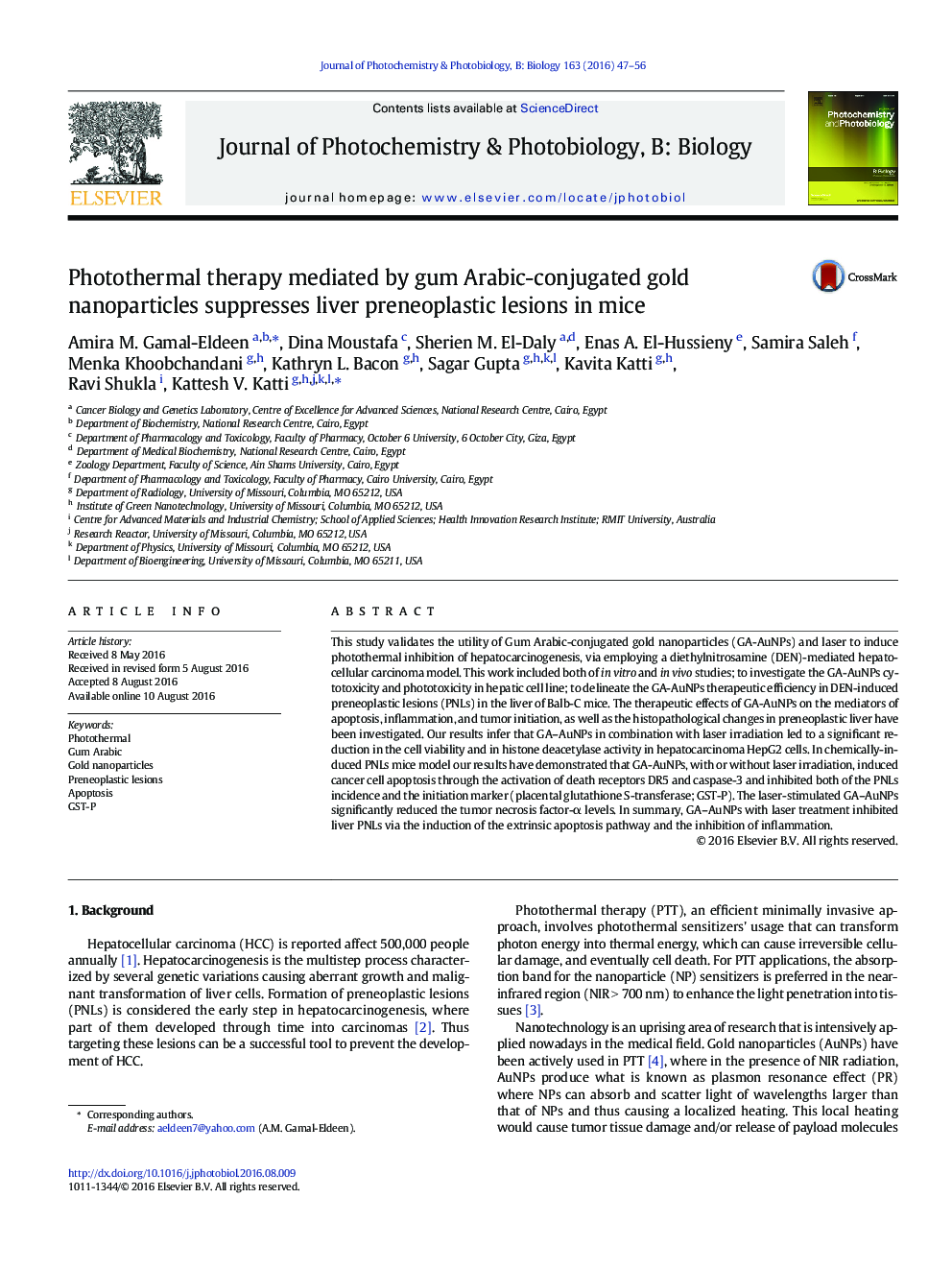| Article ID | Journal | Published Year | Pages | File Type |
|---|---|---|---|---|
| 4754645 | Journal of Photochemistry and Photobiology B: Biology | 2016 | 10 Pages |
â¢The first time to study GA-AuNPs/laser effect on hepatic pre-neoplastic lesionsâ¢GA-AuNPs/laser can inhibit early initiation stage of carcinogenesis process.â¢GA-AuNPs/laser induced extrinsic apoptosis.â¢GA-AuNPs/laser increased death receptors DR5 and caspase-3.â¢GA-AuNPs/laser inhibited the preneoplastic lesions incidence, GST-P, and TNF-α.
This study validates the utility of Gum Arabic-conjugated gold nanoparticles (GA-AuNPs) and laser to induce photothermal inhibition of hepatocarcinogenesis, via employing a diethylnitrosamine (DEN)-mediated hepatocellular carcinoma model. This work included both of in vitro and in vivo studies; to investigate the GA-AuNPs cytotoxicity and phototoxicity in hepatic cell line; to delineate the GA-AuNPs therapeutic efficiency in DEN-induced preneoplastic lesions (PNLs) in the liver of Balb-C mice. The therapeutic effects of GA-AuNPs on the mediators of apoptosis, inflammation, and tumor initiation, as well as the histopathological changes in preneoplastic liver have been investigated. Our results infer that GA-AuNPs in combination with laser irradiation led to a significant reduction in the cell viability and in histone deacetylase activity in hepatocarcinoma HepG2 cells. In chemically-induced PNLs mice model our results have demonstrated that GA-AuNPs, with or without laser irradiation, induced cancer cell apoptosis through the activation of death receptors DR5 and caspase-3 and inhibited both of the PNLs incidence and the initiation marker (placental glutathione S-transferase; GST-P). The laser-stimulated GA-AuNPs significantly reduced the tumor necrosis factor-α levels. In summary, GA-AuNPs with laser treatment inhibited liver PNLs via the induction of the extrinsic apoptosis pathway and the inhibition of inflammation.
